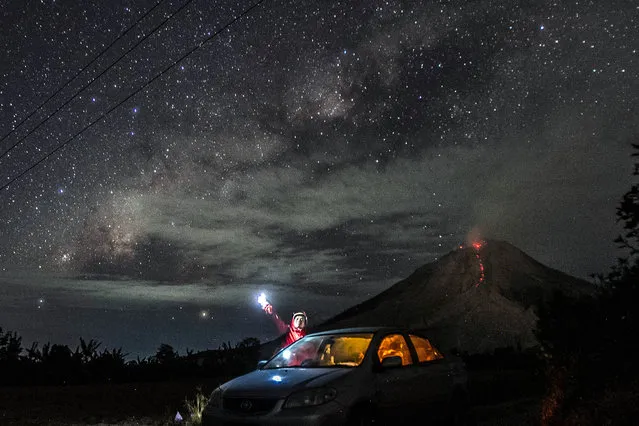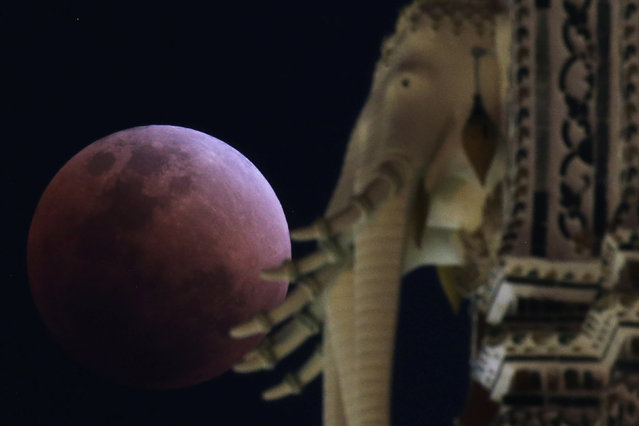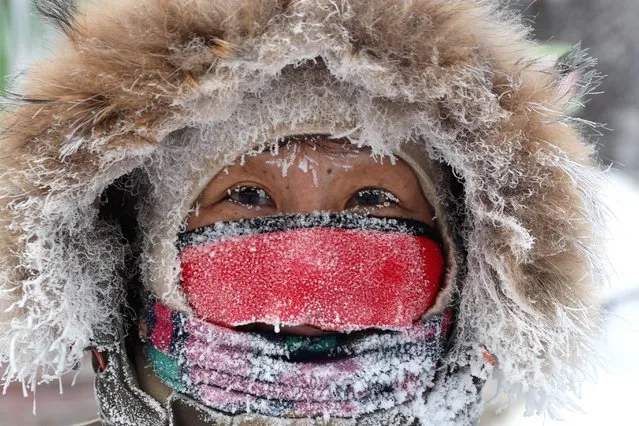18 Sep 2012 10:13:00,post received
0 comments
Details

A life-size robot named “Mark 1”, built by product and graphic designer Ricky Ma, 42, is seen in Hong Kong, China March 31, 2016. Ma, a robot enthusiast, spent a year-and-a half and more than HK$400,000 ($51,000) to create the humanoid robot, which is modelled after a Hollywood star, to fulfil his childhood dream. The eyes of the robot include face and color tracking functions. (Photo by Bobby Yip/Reuters)
02 Apr 2016 09:38:00,post received
0 comments

Long Exposure pictures showing Mount Sinabung spewing out hot lava on August 2, 2017 in Karo, Indonesia. Sinabung located in North Sumatra Province roared back to life in 2010 for the first time in 400 years. After another period of inactivity it erupted once more in 2013, and has remained highly active since. (Photo by Albert Damanik/Barcroft Images)
03 Aug 2017 09:09:00,post received
0 comments

Young Turkana tribeswomen sing in a village near Baragoy, Kenya August 6, 2017. Kenyans are due to go to the polls on Aug. 8. to vote in presidential elections after a tightly-fought race between President Uhuru Kenyatta and main opposition leader Raila Odinga. (Photo by Goran Tomasevic/Reuters)
08 Aug 2017 07:05:00,post received
0 comments

A “super blood blue moon” is seen during an eclipse behind an elephant statue at a temple in Bangkok, Thailand, January 31, 2018. (Photo by Athit Perawongmetha/Reuters)
01 Feb 2018 07:17:00,post received
0 comments

School cheerleaders wearing protective masks pose for a photo as fellow students arrive for classes on the first day of school in Miami-Dade County at Barbara Goleman Senior High School, in Miami, Florida, August 23, 2021. (Photo by Marco Bello/Reuters)
31 Aug 2021 07:40:00,post received
0 comments

A man in Yakutsk, the capital of the Sakha Republic (Yakutia) in the Russian Far East on November 23, 2021. Located in Tuimaada Valley on the Lena River, Yakutsk is the largest city in the permafrost zone. On 23 November 2021, the daytime temperature ranged between –35 and –31 degrees Celsius in Yakutsk. On the night between 22 and 23 November, the temperature went down to –37 degrees Celsius. (Photo by Vadim Skryabin/TASS)
04 Dec 2021 07:46:00,post received
0 comments

Bus hostesses adjusts their hair before photos outside the Great Hall of the People the eve of the opening session of the annual meeting of China's National People's Congress (NPC) in Beijing, Saturday, March 4, 2023. (Photo by Ng Han Guan/AP Photo)
10 Mar 2023 00:07:00,post received
0 comments

